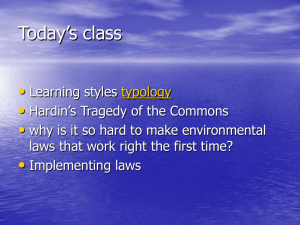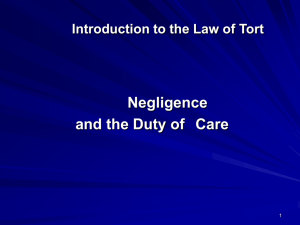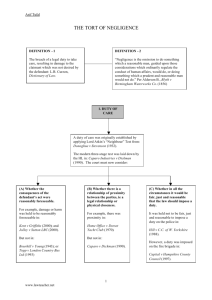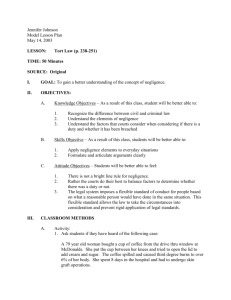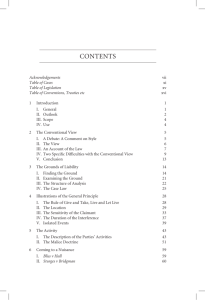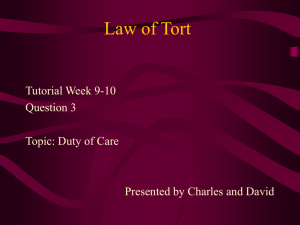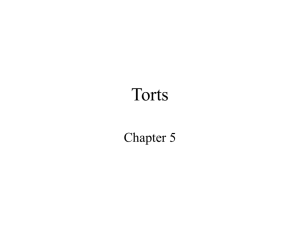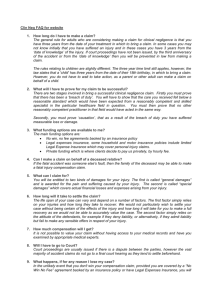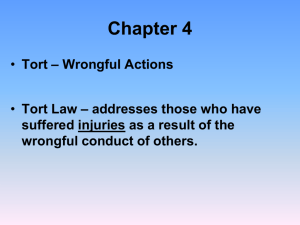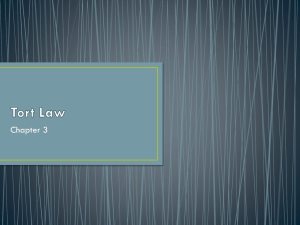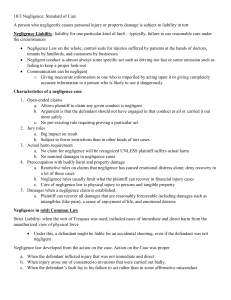Environmental Law
advertisement
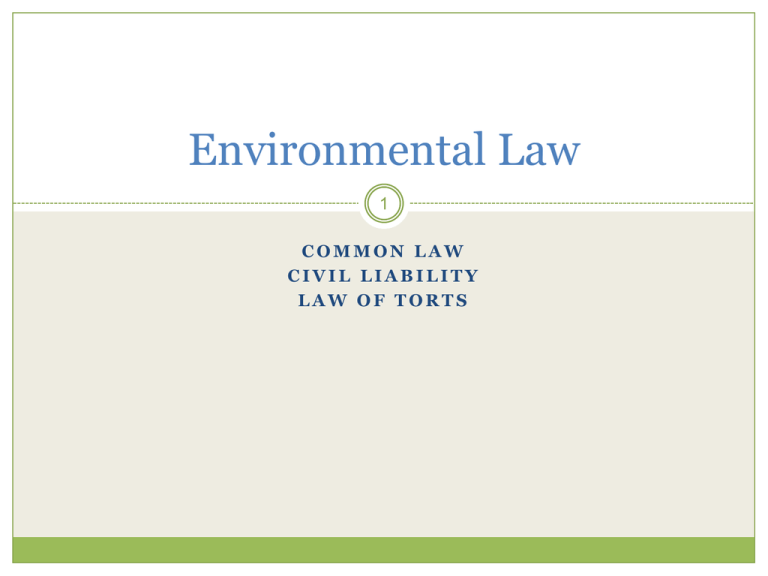
Environmental Law 1 COMMON LAW CIVIL LIABILITY LAW OF TORTS Environmental Law 2 Common Law Control environmental damage Primary function to protect private rights Civil action Individual has suffered harm/damage - against Individual / institution which has caused harm Reactive Compensatory - damages Burden of proof Environmental Law 3 Negligence Advantages Claimant does not need to have an interest in land Damages compensate personal injuries Disadvantages Injunctions are not available; neither are Pure economic loss & exemplary damages Necessary to prove fault Environmental Law 4 Negligence Definition The omission to do something which a reasonable man, guided upon those considerations which ordinarily regulate the conduct of human affairs, would do, or doing something which a prudent and reasonable man would not do. Blythe v Birmingham Waterworks (1856) Environmental Law 5 In order to establish negligence, claimant must prove: Defendant owes claimant a duty of care; Defendant breaches that duty (failure to act reasonably) Breach causes damage to claimant Duty of care in negligence established in Donoghue v Stevenson (1932) Must take reasonable care to avoid acts or omissions which you can foresee would be likely to injure your neighbour Test of causation Environmental Law 6 Negligence in environmental law is difficult to prove Diffuse sources of pollution Foreseeability of the damage Cambridge Water Co Ltd v Eastern Counties Leather 1994 Foreseeability of the relevant type of harm / damage In that case supervisor could not reasonably have foreseen damage ie contamination of groundwaters Proximate relationship between parties Just and reasonable to impose duty Environmental Law 7 Negligence Damage must be proved Possible to claim damages for physical damage to person or property and for loss consequential to damage but not for pure economic loss Nuisance: Private Statutory = ss79-82 Environmental Protection Act 1990 Private = reconciling competing interests of landowners Environmental Law 8 Private Nuisance Conduct must constitute an unreasonable interference with interest in beneficial use of land Defined in Read v Lyons (1947) as: ‘Unlawful interference with a person’s use or enjoyment of land or some right over, or in connection with it’ Reasonableness – Saunders v Grosvenor Mansions and D’Allesandri (1990) Environmental law 9 Private Nuisance: Acting reasonably? Court balances competing interests and takes a/c of: Locality; Duration; Sensitivity of plaintiff; Intention of defendant; Whole community Forseeability of type of harm/damage (CambridgeWater) Interest in land affected
